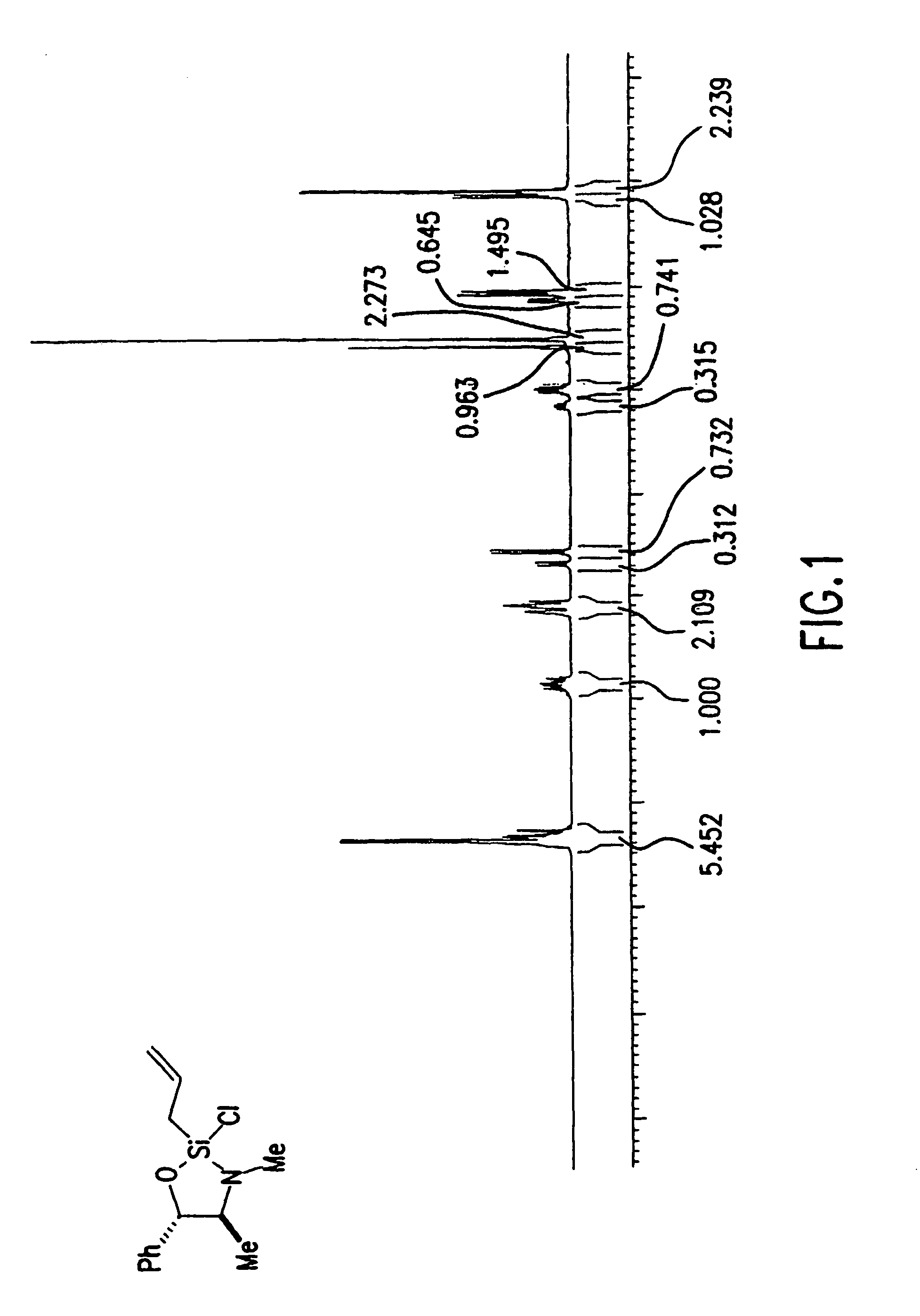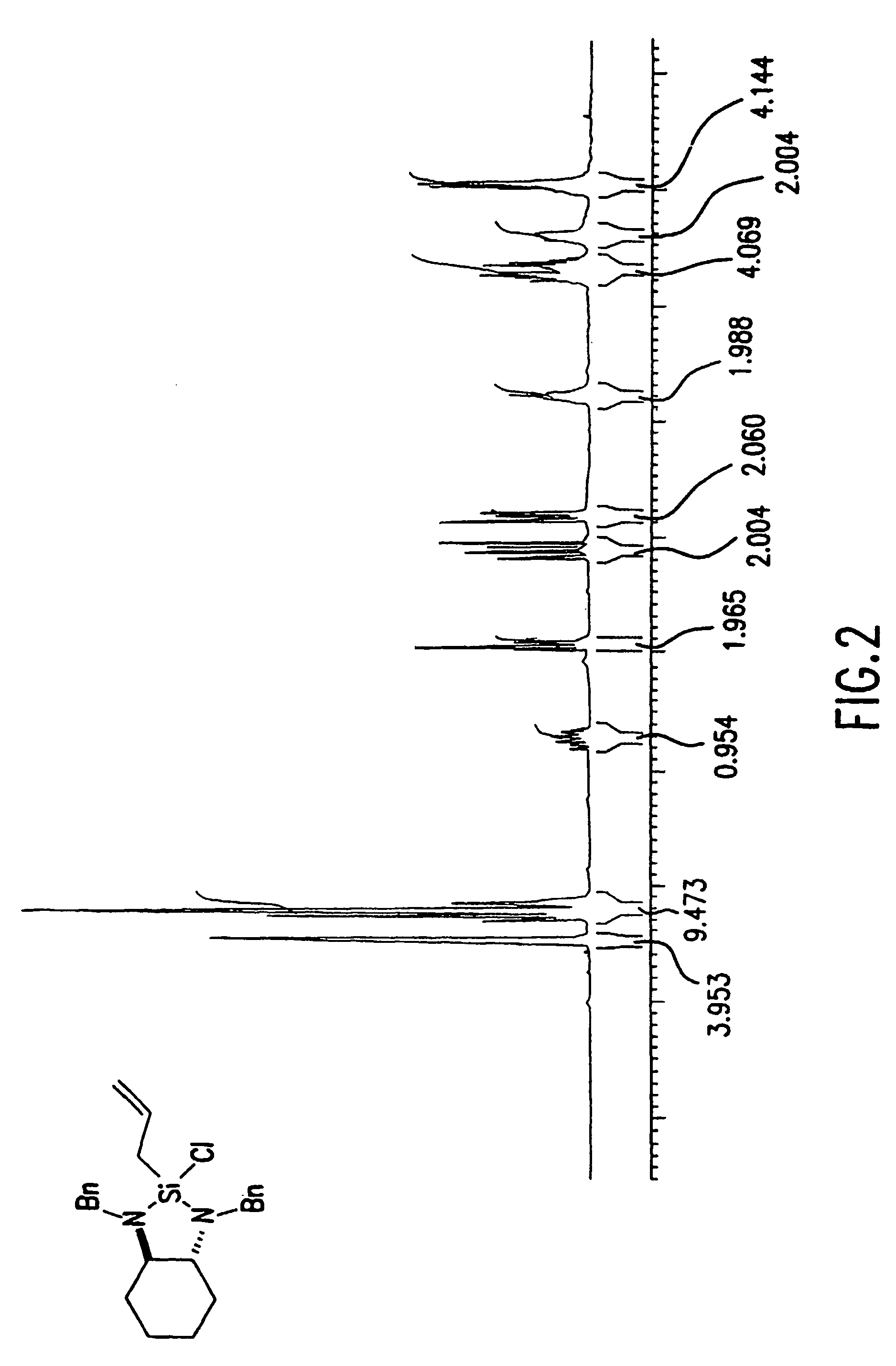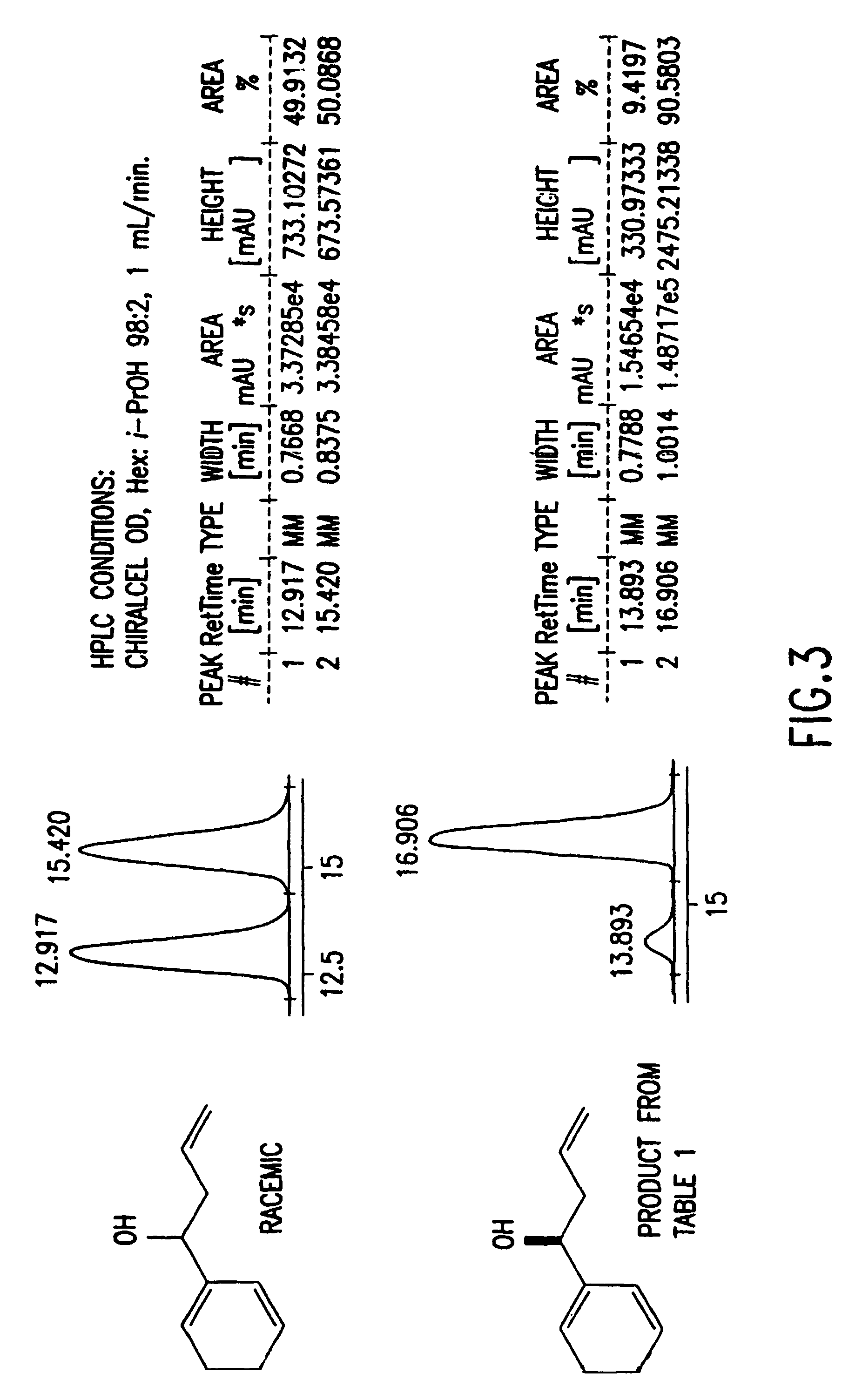Reagents for asymmetric allylation, aldol, and tandem aldol and allyation reactions
a technology of allylation and tandem aldol, which is applied in the field of reagents, can solve the problems of instability of reagents or catalysts, need for using reagents, and high cost of preparation, and achieve excellent enantioselectivities in the reaction
- Summary
- Abstract
- Description
- Claims
- Application Information
AI Technical Summary
Benefits of technology
Problems solved by technology
Method used
Image
Examples
examples
[0144]
[0145]Preparation of (4S,5S)-2-Allyl-2-chloro-3,4-dimethyl-5-phenyl-[1,3,2]oxazasilolidine: To a cooled (0° C.) solution of allyltrichlorosilane (101 mL, 0.696 mol) in methylene chloride (1.8 L) under argon was added triethylamine (170 mL, 1.21 mol). (1S,2S)-pseudoephedrine (100 g, 0.605 mol) was then added portionwise over 30 min, to maintain internal temperature below 15° C. After the addition was complete the mixture was stirred for 12 hours at ambient temperature. The methylene chloride was removed by distillation and the residue was diluted with pentane (1.5 L). The mixture was vigorously stirred for 12 hours to ensure complete precipitation of the triethylamine salts. Filtration of the resulting suspension through a pad of celite and concentration of the filtrate by distillation afforded the crude product as a pale yellow oil. Purification by distillation under reduced pressure (bp˜120 C, 5 mm Hg) provided 149 g (92%) of (4S, 5S)-2-Allyl-2-chloro-3,4-dimethyl-5-phenyl-[1...
PUM
| Property | Measurement | Unit |
|---|---|---|
| temperature | aaaaa | aaaaa |
| temperature | aaaaa | aaaaa |
| temperature | aaaaa | aaaaa |
Abstract
Description
Claims
Application Information
 Login to View More
Login to View More - R&D
- Intellectual Property
- Life Sciences
- Materials
- Tech Scout
- Unparalleled Data Quality
- Higher Quality Content
- 60% Fewer Hallucinations
Browse by: Latest US Patents, China's latest patents, Technical Efficacy Thesaurus, Application Domain, Technology Topic, Popular Technical Reports.
© 2025 PatSnap. All rights reserved.Legal|Privacy policy|Modern Slavery Act Transparency Statement|Sitemap|About US| Contact US: help@patsnap.com



